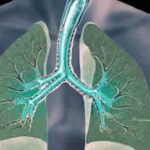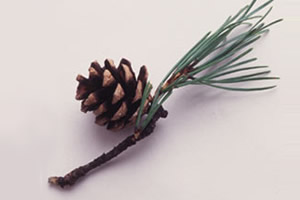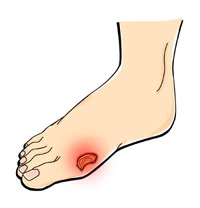 Complementary and alternative medicines (CAM) are frequently given to children and adolescents for reputed benefits for hyperkinetic and concentration disorders such as attention deficit hyperactivity disorder (ADHD).
Complementary and alternative medicines (CAM) are frequently given to children and adolescents for reputed benefits for hyperkinetic and concentration disorders such as attention deficit hyperactivity disorder (ADHD).
Researchers in Arizona and Australia assessed the evidence based on the results of studies providing an acceptable standard of evidence. Continue reading Review: CAM for ADHD →
 Today is Worlds Asthma Day.
Today is Worlds Asthma Day.
So, researchers from the UK and China reviewed the evidence supporting the use of herbs and plant extracts to manage asthma. Continue reading Review of herbals to treat asthma →
 Pine bark extract is a dietary antioxidant supplement.
Pine bark extract is a dietary antioxidant supplement.
In this study, researchers at Stanford University School of Medicine, in California, attempt to correct past studies that they consider flawed. Continue reading No effect of pine bark extract on cardiovascular disease risk →
 Most often, diabetic retinopathy causes no symptoms until the eye damage becomes severe.
Most often, diabetic retinopathy causes no symptoms until the eye damage becomes severe.
In this study, researchers from G D’Annunzio University, in San Valentino, Italy studied the effects of Pycnogenol in the early stages of retinopathy. Continue reading Benefits of Pycnogenol in early diabetic retinopathy →
 Researchers from G D’Annunzio University, in Italy tell us Pycnogenol, both in oral and in topical form, is effective. Continue reading Pycnogenol to treat acute hemorrhoids →
Researchers from G D’Annunzio University, in Italy tell us Pycnogenol, both in oral and in topical form, is effective. Continue reading Pycnogenol to treat acute hemorrhoids →
 Diabetes affects the eyes and can lead to retinopathy (non-inflammatory damage to the retina of the eye) leading to gradual loss of vision.
Diabetes affects the eyes and can lead to retinopathy (non-inflammatory damage to the retina of the eye) leading to gradual loss of vision.
Researchers from D’Annunzio University, in San Valentino, Italy studied the effects of Pycnogenol during the early stages of retinopathy. Continue reading Effects of Pycnogenol on vision in diabetic patients →
 Ms. Meenakshi Khatta is a nurse practitioner and associate professor at the University of Maryland in Baltimore. Nurse Khatta has reviewed the use of CAM to treat pain due to musculoskeletal conditions.
Ms. Meenakshi Khatta is a nurse practitioner and associate professor at the University of Maryland in Baltimore. Nurse Khatta has reviewed the use of CAM to treat pain due to musculoskeletal conditions.
Here are her findings on herbal supplements used to treat fibromyalgia, osteoarthritis, and rheumatoid arthritis. Continue reading Herbals for arthritis and other musculoskeletal conditions →
 Researchers from the University of Canterbury, at Christchurch, New Zealand reviewed the evidence supporting the use of nutritional and herbal supplements to treat attention-deficit/hyperactivity disorder (ADHD). Continue reading Treating ADHD with supplements →
Researchers from the University of Canterbury, at Christchurch, New Zealand reviewed the evidence supporting the use of nutritional and herbal supplements to treat attention-deficit/hyperactivity disorder (ADHD). Continue reading Treating ADHD with supplements →
 The World Health Organization has predicted a 39% rise in the worldwide prevalence of diabetes by 2030. And an article in The Lancet indicates this might be an underestimation.
The World Health Organization has predicted a 39% rise in the worldwide prevalence of diabetes by 2030. And an article in The Lancet indicates this might be an underestimation.
Since November is Diabetes Month, here’s a round-up of CAM options for people with diabetes from 2006 through March 2007.
Continue reading CAM and diabetes: An update of recent studies →
 Pycnogenol is a scavenger of oxygen free radicals. Here’s the latest in a series of positive studies. Continue reading Treating osteoarthritis with pycnogenol →
Pycnogenol is a scavenger of oxygen free radicals. Here’s the latest in a series of positive studies. Continue reading Treating osteoarthritis with pycnogenol →
 This is apparently the first study of pycnogenol (French maritime pine bark extract) to treat peri-menopausal symptoms. Continue reading Peri-menopausal symptoms treated with pycnogenol →
This is apparently the first study of pycnogenol (French maritime pine bark extract) to treat peri-menopausal symptoms. Continue reading Peri-menopausal symptoms treated with pycnogenol →
 Long-term treatment with French maritime pine bark extract (pycnogenol) reduced symptoms of endometriosis, such as pelvic pain and dysmenorrhea, in a study reported in the Journal of Reproductive Medicine.
Long-term treatment with French maritime pine bark extract (pycnogenol) reduced symptoms of endometriosis, such as pelvic pain and dysmenorrhea, in a study reported in the Journal of Reproductive Medicine.
Medscape has a summary.
Continue reading Pycnogenol reduces pain of endometriosis →
 In the past year, several studies on this topic have appeared. The results are positive.
In the past year, several studies on this topic have appeared. The results are positive.
So, let’s review.
Continue reading Pycnogenol treatment of venous insufficiency →
 The Centers for Disease Control has just published the latest data on the prevalence of diabetes in the US.
The Centers for Disease Control has just published the latest data on the prevalence of diabetes in the US.
- 11% of adults aged 40 to 59 years
- 23% of those 60 and older have diabetes
Is it any wonder that so many CAM therapies are studied in people with diabetes?
A quick listing of CAM entries for diabetes on this blog is provided below. Or, click the button on the right sidebar to see all of the diabetes entries.
Continue reading Prevalence of diabetes in the US in 2006 →
 One of the major complications of diabetes mellitus is the change in small blood vessels called microangiopathy. It’s associated with kidney failure and blindness, as well as other conditions such as diabetic ulcers.
One of the major complications of diabetes mellitus is the change in small blood vessels called microangiopathy. It’s associated with kidney failure and blindness, as well as other conditions such as diabetic ulcers.
Here are the results of a study of pycnogenol in people with diabetic ulcers.
Continue reading Improvement in diabetic ulcers with pycnogenol →
 Here are the results from two studies that support the role of pycnogenol (pronounced pick-nah-geh-nol) to treat ADHD (attention deficit/hyperactivity disorder).
Here are the results from two studies that support the role of pycnogenol (pronounced pick-nah-geh-nol) to treat ADHD (attention deficit/hyperactivity disorder).
Continue reading Positive effects of pycnogenol in children with ADHD →
 Six years ago I wrote an article about pycnogenol. It was a story about a man (Dr. Jacques Masquelier), his invention (the extraction process), and alleged trademark infringement, which prevents him from selling his product in the United States.
Six years ago I wrote an article about pycnogenol. It was a story about a man (Dr. Jacques Masquelier), his invention (the extraction process), and alleged trademark infringement, which prevents him from selling his product in the United States.
Pycnogenol is a scavenger of oxygen free radicals, and Dr. Masquelier’s website presents a long list of benefits attributed to pycnogenol. We await the supporting clinical trial results, however.
The point of this post is to update that original article. Dr. Masquelier (in his late 80s) is retired. His successors continue to defend the extraction process and their product.
7/1/06 9:33 JR
Complementary and Alternative Medicine: Fair, Balanced, and to the Point
 Complementary and alternative medicines (CAM) are frequently given to children and adolescents for reputed benefits for hyperkinetic and concentration disorders such as attention deficit hyperactivity disorder (ADHD).
Complementary and alternative medicines (CAM) are frequently given to children and adolescents for reputed benefits for hyperkinetic and concentration disorders such as attention deficit hyperactivity disorder (ADHD).



 Diabetes affects the eyes and can lead to retinopathy (non-inflammatory damage to the retina of the eye) leading to gradual loss of vision.
Diabetes affects the eyes and can lead to retinopathy (non-inflammatory damage to the retina of the eye) leading to gradual loss of vision. Ms. Meenakshi Khatta is a nurse practitioner and associate professor at the University of Maryland in Baltimore. Nurse Khatta has reviewed the use of CAM to treat pain due to musculoskeletal conditions.
Ms. Meenakshi Khatta is a nurse practitioner and associate professor at the University of Maryland in Baltimore. Nurse Khatta has reviewed the use of CAM to treat pain due to musculoskeletal conditions. Researchers from the University of Canterbury, at Christchurch, New Zealand
Researchers from the University of Canterbury, at Christchurch, New Zealand  The World Health Organization has predicted a 39% rise in the worldwide prevalence of diabetes by 2030. And an
The World Health Organization has predicted a 39% rise in the worldwide prevalence of diabetes by 2030. And an  This is apparently the first study of pycnogenol (French maritime pine bark extract) to treat peri-menopausal symptoms.
This is apparently the first study of pycnogenol (French maritime pine bark extract) to treat peri-menopausal symptoms.  One of the major complications of diabetes mellitus is the change in small blood vessels called
One of the major complications of diabetes mellitus is the change in small blood vessels called